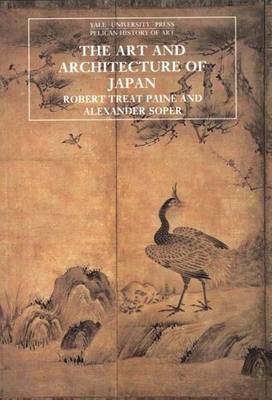The Yale University Press Pelican History of Art
2 total works
With almost 4000 years of artistic evolution - from the Shang Dynasty to the end of the Ch'ing in this century - the Chinese boast a longer span of cultural history than any other race. The abiding influence of tradition is stressed by both authors. Confucian restraint and Taoist escapism, among other religious and philosophical ideals, are constantly re-appearing and the importance of Buddhism in Chinese architecture is evidenced in the text and illustrations. But side by side with the world of the mind, conditions of material prosperity are also revealed as potent forces in art.
The Art and Architecture of Japan
by Robert Treat Paine and Alexander Soper
Published 28 February 1956
Once slighted as mere copying from China, the arts of Japan are now seen as a unique alternation of advances and withdrawals. At times the islanders produced Chinese-style works of great beauty, unmatched on the continent. When they chose to be independent, their art differs at every level. Sculpture, and even more painting, are concrete, sensuous, and emotional, speaking directly to all. All that was most native in architectural taste survived the periods of Chinese monumentality - huge temples and gridiron city plans - with little change. The rambling, wood-paper-and-bamboo dwelling re-emerged 1000 years ago, almost as it may still be seen today.

